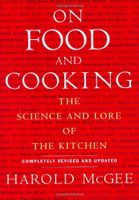Label
All
0
Clear all filters
✨ BLACK FRIDAY OFFER: Save 50% on ckbk membership ✨
How Tea Enzymes Create Flavor, Color, and Body
Appears in
By Harold McGee
Published 2004
The period of enzyme activity during tea-making has traditionally been called “fermentation,” but it doesn’t involve any significant microbial activity. In tea-making, “fermentation” means enzymatic transformation. It occurs when the tea maker presses the leaves to break open their cells, and then allows the leaves to sit for some time while the enzymes do their work.
There are two general kinds of enzymatic transformation in making tea. One is the liberation of a large range of aroma compounds, which in the intact leaf are bound up with sugars and so can’t escape into the air. When the cells are crushed, enzymes break the aroma-sugar complex apart. This liberation makes the aroma of oolong and black teas fuller and richer than the aroma of green teas.
Part of
Advertisement
Related Recipes
-
-
-
-
Related Reference
-
-
-
-
Advertisement
The licensor does not allow printing of this title



